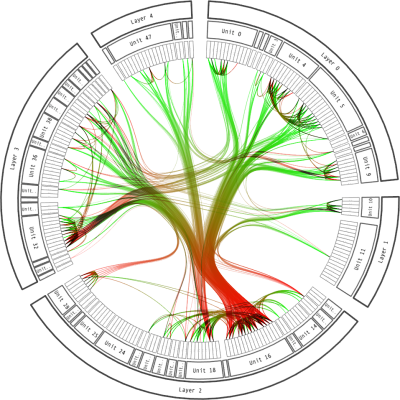Topic: SCIENCE - on April 9, 2007 at 2:24:00 PM CEST
Scots scientists unveil 'spray-on' computer
SCOTTISH scientists have developed a computer the size of a matchstick head, thousands of which can be sprayed onto patients to give a comprehensive analysis of their condition.
Speckled computing - some of the most advanced computing technology in the world - is currently being researched and developed by a group of Scottish experts.
The individual appliances, or 'specks', will form networks that can be programmed like ordinary computers.
... Link (0 comments) ... Comment
Topic: SCIENCE - on April 6, 2007 at 12:54:00 PM CEST
Solar Power Breakthrough: Solar Dyes Could Be Put In Windows, Clothing
New solar cells developed by Massey University don't need direct sunlight to operate and use a patented range of dyes that can be impregnated in roofs, window glass and eventually even clothing to produce power.

... Link (0 comments) ... Comment
Topic: SCIENCE - on March 31, 2007 at 1:33:00 PM CEST
Architect Claims to Solve Pyramid Secret
A French architect claimed Friday to have uncovered the mystery about how Egypt's Great Pyramid of Khufu was built _ with use of a spiral ramp to hoist huge stone blocks into place.
The construction of the Great Pyramid 4,500 years ago by Khufu, a ruler also known as Cheops, has long befuddled scientists as to how its 3 million stone blocks weighing 2.5 tons each were lifted into place.
... Link (0 comments) ... Comment
Topic: SCIENCE - on March 29, 2007 at 1:10:00 PM CEST
Cutting-edge Technology: The World's Smallest Scissors
Scientists in Japan have created what may be the smallest scissors in the world—molecular clippers that are opened and closed with light.
These novel shears could help control genes, proteins and other molecules in the body, researchers said.
The scissors are just three nanometers, or billionths of a meter, long. This makes them more than 100 times smaller than a wavelength of violet light.

... Link (0 comments) ... Comment
Topic: SCIENCE - on March 28, 2007 at 12:14:00 PM CEST
10 Important Differences Between Brains and Computers
Although the brain-computer metaphor has served cognitive psychology well, research in cognitive neuroscience has revealed many important differences between brains and computers. Appreciating these differences may be crucial to understanding the mechanisms of neural information processing, and ultimately for the creation of artificial intelligence. Below, I review the most important of these differences (and the consequences to cognitive psychology of failing to recognize them): similar ground is covered in this excellent (though lengthy) lecture.
... Link (0 comments) ... Comment
Topic: SCIENCE - on March 26, 2007 at 12:37:00 PM CEST
Extravis - EXecution TRAce VISualizer
This is the subpage for Extravis, a beta-stage, OpenGL-based software visualization tool that enables users to interactively explore and analyze dynamic program information, i.e., program execution traces. Extravis is part of the Reconstructor toolset. The Reconstructor project aims at raising the state of the art in software architecture reconstruction; more information on Reconstructor can be found here.

... Link (0 comments) ... Comment
Topic: SCIENCE - on March 23, 2007 at 10:36:00 AM CET
Whale fossil is found in vineyard
The biggest whale fossil ever discovered in Italy has been found in one of the country's finest vineyards.
The five-million-year-old skeleton, 33ft (10m) in length, was dug up in the northern grape-growing area of Tuscany.
... Link (0 comments) ... Comment
Topic: SCIENCE - on March 22, 2007 at 11:03:00 AM CET
UCLA Scientists Create World's Smallest Alphabet
UCLA professor Thomas G. Mason and chemistry graduate student Carlos J. Hernandez produced microscale particles shaped like each letter of the alphabet. Graduate student James Wilking used "laser tweezers" to pick up the letters 'U, C, L, A' and move them in order "like skywriting in solution."

... Link (0 comments) ... Comment
Topic: SCIENCE - on March 22, 2007 at 10:59:00 AM CET
Organism Survives 100 Million Years Without Sex
A tiny creature that has not had sex for 100 million years has overturned the theory that animals need to mate to create variety.
Analysis of the jaw shapes of bdelloid rotifers, combined with genetic data, revealed that the animals have diversified under pressure of natural selection.
... Link (0 comments) ... Comment
Topic: SCIENCE - on March 20, 2007 at 11:02:00 AM CET
The History of the Earth in a Toilet Paper Roll
The earth is over 5 billion years old. Life first originated in the oceans 3.4 billion years ago. The dinosaurs died out 65 million years in the past. Human recorded history stretches back 10,000 years in time.
These numbers are too large to visualize, and difficult to compare. Here's an easy way to put time in perspective, and actually visualize different eras in the earth's history. You'll need a roll of toilet paper, a long hallway, and some sticky notes.

... Link (0 comments) ... Comment
Topic: SCIENCE - on March 7, 2007 at 9:38:00 AM CET
Coffee 'no boost in the morning'
That morning latte or espresso may not be the pick-me-up people think it is, a study has revealed.
University of Bristol researchers say the caffeine eases withdrawal symptoms which build up overnight, but does not make people more alert than normal.
... Link (0 comments) ... Comment
Topic: SCIENCE - on March 4, 2007 at 1:27:00 PM CET
Archaeoastronomy in Peru
The Thirteen Towers of Chankillo in Peru may be the Western Hemisphere's oldest known full-service solar observatory, showing evidence of early, sophisticated Sun cults, according to archaeoastronomy professor Clive Ruggles. The 2,300-year-old complex featured 13 towers running north to south along a ridge and spread across 980 feet to form a toothed horizon that spans the solar arc. Last year, another ancient observatory was discovered in Peru by Robert Benfer. The Temple of the Fox is 4,200 years old, making it 1,900 years older than the Chankillo site, but wasn't a complete calendar.
... Link (0 comments) ... Comment










